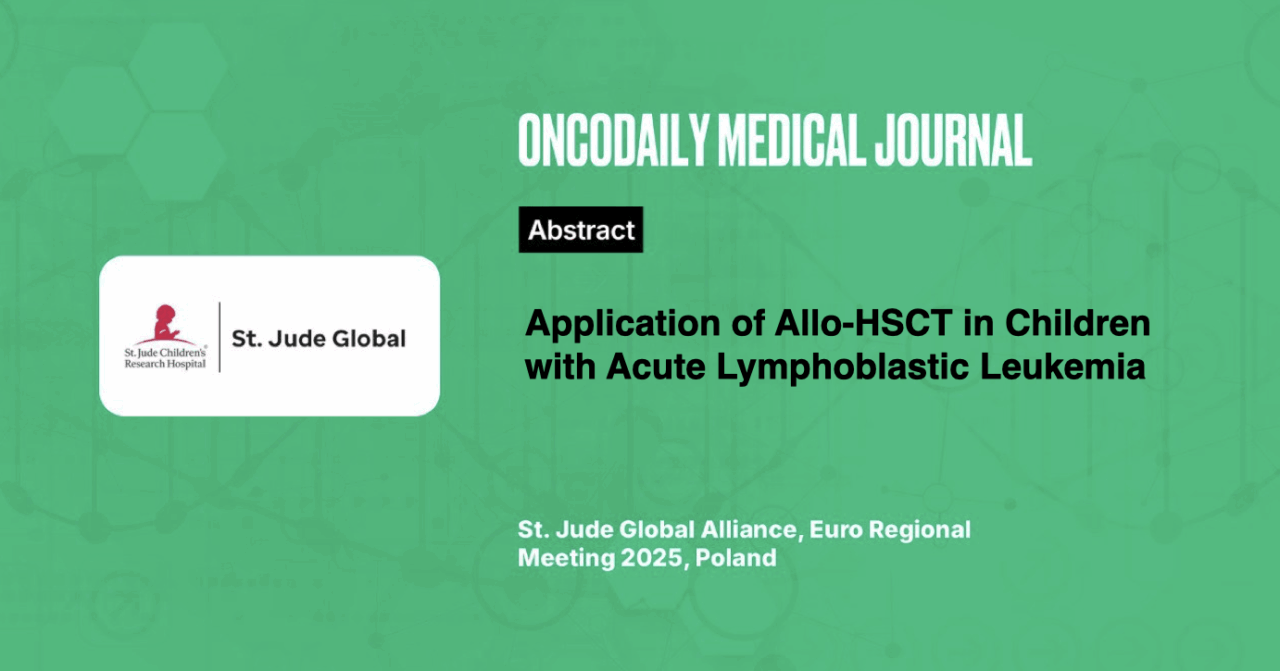Application of Allo-HSCT in Children with Acute Lymphoblastic Leukemia
Abstract
Introduction: Hematopoietic stem cell transplantation (HSCT) is a highly advanced treatment that can lead to complete recovery in patients with acute leukemia (AL) and other blood disorders. Despite its effectiveness, HSCT outcomes are influenced by donor compatibility, conditioning regimens, and post- transplant complications, such as graft-versus-host disease (GVHD) and disease relapse. The success of the procedure depends on selecting the appropriate conditioning protocol and managing post-transplant complications to improve survival rates. This study aims to analyze the outcomes of allogeneic HSCT (allo-HSCT) in children with acute leukemia and assess survival rates based on donor type and transplant- related complications.
Methodology: This study analyzed clinical data from 16 pediatric patients diagnosed with acute leukemia (ALL – 12, AML – 4), aged 2 to 16 years, who underwent allogeneic HSCT between January 2022 and March 2024 at Emsey (Turkey) and Acibadem (Turkey) clinics. Of these, 7 patients received transplants from related donors, while 9 received transplants from unrelated donors. The conditioning regimen included Fludarabine (30 mg/m2) on days 1-5, Treosulfan (30 mg/m2) on days 2-4, Thiotepa (2 × 5 mg/kg) on day 6, and ATG (200 mg) for 3 days. To prevent GVHD, patients received cyclosporine A (3 mg/kg) and mycophenolate mofetil (MMF) at a dose of 30-45 mg/kg.
Results: The HLA typing compatibility between donors and recipients was 10/10, indicating optimal donor matching. However, GVHD complications were observed in three patients, with skin GVHD in a 15-year-old ALL patient, intestinal GVHD in a 3-year-old ALL patient, and skin-intestinal GVHD in a 17-year-old ALL patient. The mortality rate due to disease relapse was 30% (4 cases). Survival rates varied depending on the type of transplant, with unrelated allo-HSCT patients surviving up to 60 days in 18.7% (2 cases), haploidentical allo-HSCT from the mother achieving survival up to 100 days in 6.25% (1 case), and haploidentical allo-HSCT from the father extending survival up to 240 days in 6.25% (1 case).
Conclusion: With a complete remission rate of 75.0% (12 cases), allo-HSCT has proven to be an effective treatment method for children with high-risk acute leukemia. However, post-transplant complications, including GVHD and disease relapse, remain significant challenges. The findings highlight the importance of optimizing conditioning regimens, selecting appropriate donors, and managing post-transplant complications to improve long-term survival outcomes for pediatric patients undergoing HSCT. Further research and advancements in transplantation techniques are essential to reducing mortality and enhancing the effectiveness of this life-saving procedure.





